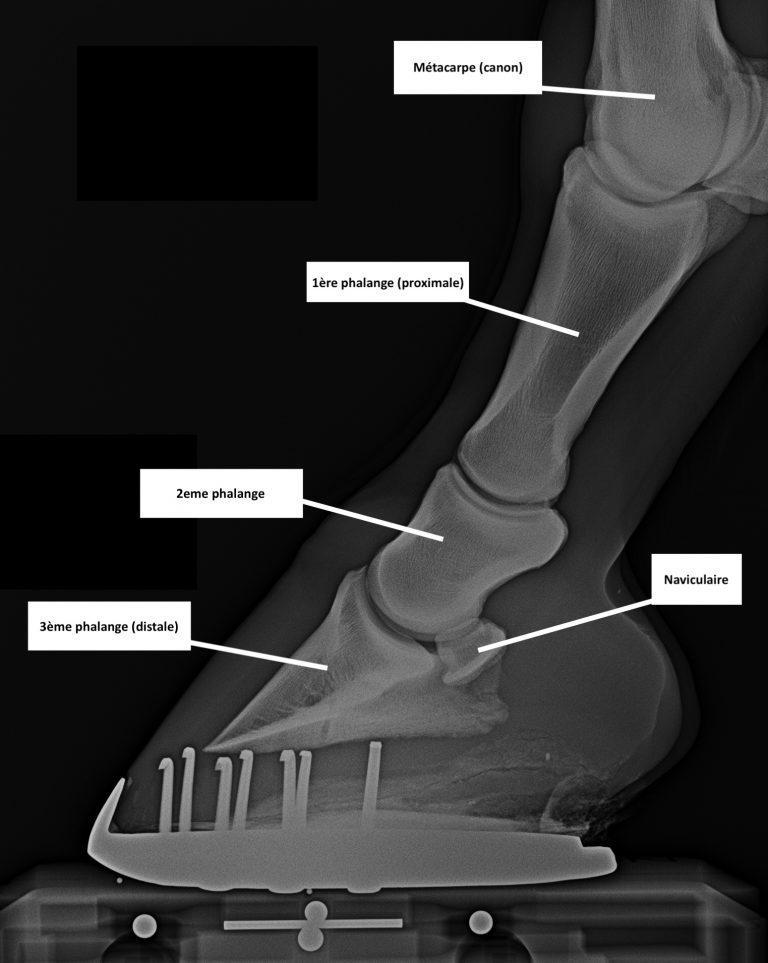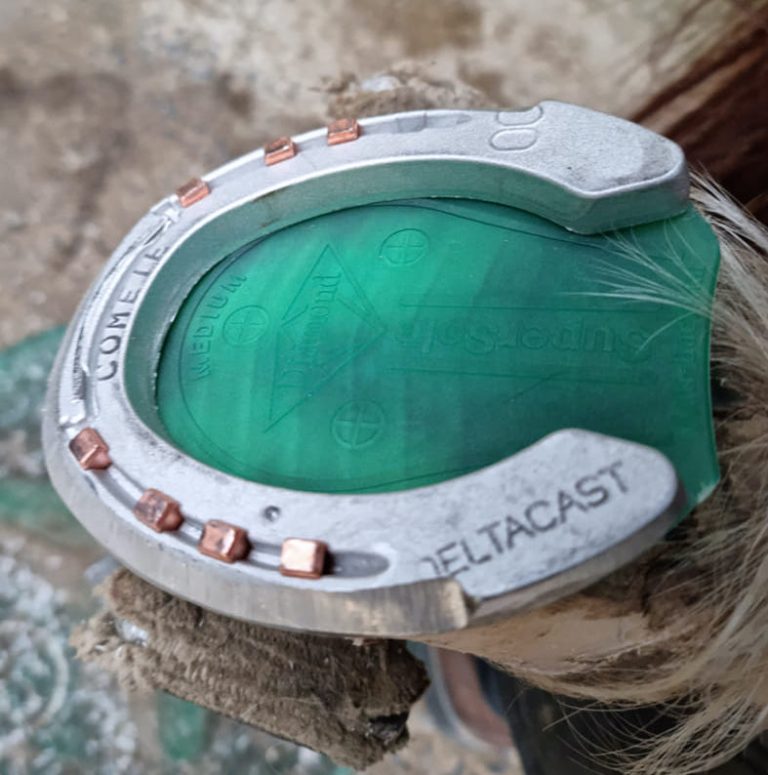New challenge for Alexandre Legrand, farrier from the North of France (59), and the Equitom equine clinic (Belgium). Essential for the health, well-being and performance of horses, the collaboration between farriers and veterinarians is always interesting to analyze. Focus on the case of a horse suffering from a malformation of the hind limbs and the strategies put in place to help him.
The phalanges of the horse's limb
We find in the lower part of the limb, under the fetlock, three phalanges.
- The first phalanx, called proximal, is located at the level of the pastern.
- The second, so-called middle phalanx.
- The third phalanx, called distal, is located in the foot.

Anamnesis
In the case of the horse presented in this article, the animal does not function normally and has had a malformation of the hind legs since birth (agenesis). Its first two phalanges have merged into one. Several farriers followed one another to relieve the animal but unfortunately without apparent results, the lameness was always present at the level of the hindlimbs. The horse was shod with classic shoes with leather open frog plates. A barefoot passage was also attempted but without convincing results (below, on the left, the case with fused phalanges, on the right, a healthy horse).


Farrier/veterinarian collaboration

On the veterinarian side :
To help this horse followed within Equitom, the clinic recommends support for the posterior of the phalanx. Trimming is recommended, as well as good heel shoe coverage. A plate and a silicone are prescribed to contribute to the comfort of the horse.
On the farrier side :
The farrier must now couple his experience with the recommendations of the clinic. Alexandre Legrand shares with us the strategy applied to relieve this horse: “Based on the recommendations of the veterinarians, I decided to opt for aluminum to have a shoe that is as open as possible to work on maintaining the posterior part of the horse. But also to minimize the lever arms. I therefore carried out a rolling on the quarters and also on the clamp of the iron. I put a slightly compensated plate to accompany the effect of the trimming then ended up injecting a silicone for the comfort of the horse.” For the trimming plan, Alexandre relied on the data provided by the Metron software.

Hoof tracking
“For this type of orthopedics, I would ideally like to follow the horse every five weeks” says the farrier in charge. But the economic realities do not always allow the implementation of such close monitoring. Clinic visits coupled with farrier interventions can represent a difficult financial challenge for owners. In this case, a compromise must be found between the well-being of the horse and the budgetary capacities of the rider/owner. This strategy can be costly in terms of budget but pays off for the horse’s health and comfort, as Alexandre concludes: “The results are more than encouraging since the horse is going crazy again in the paddock, he trots and gallops! The owner is delighted even if, for me, there is always a margin of progress because it will take several shoeings for an optimal result”.
The improvements are confirmed by the owner, grateful for the care given to her equine companion: “My horse is doing so much better… He engages his hind legs more and seems less stuck. He is more comfortable in his ‘sneakers'”! Great work! I see the difference, thank you for it.”




